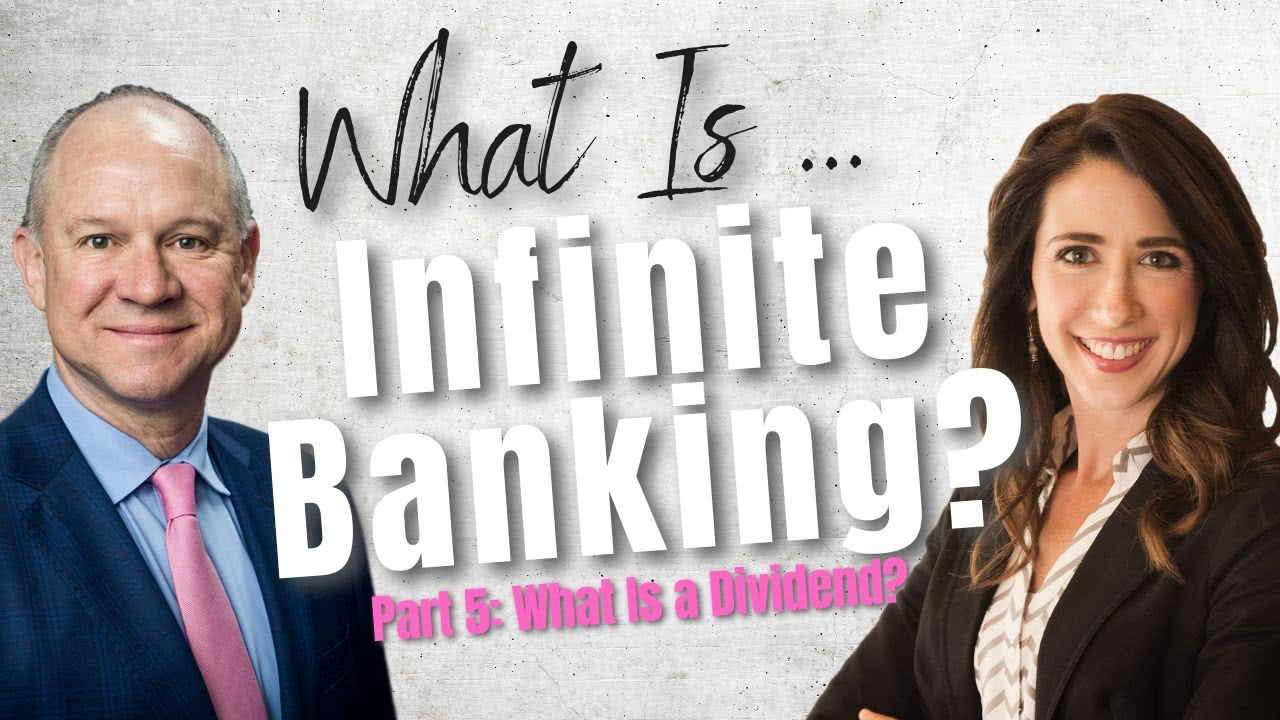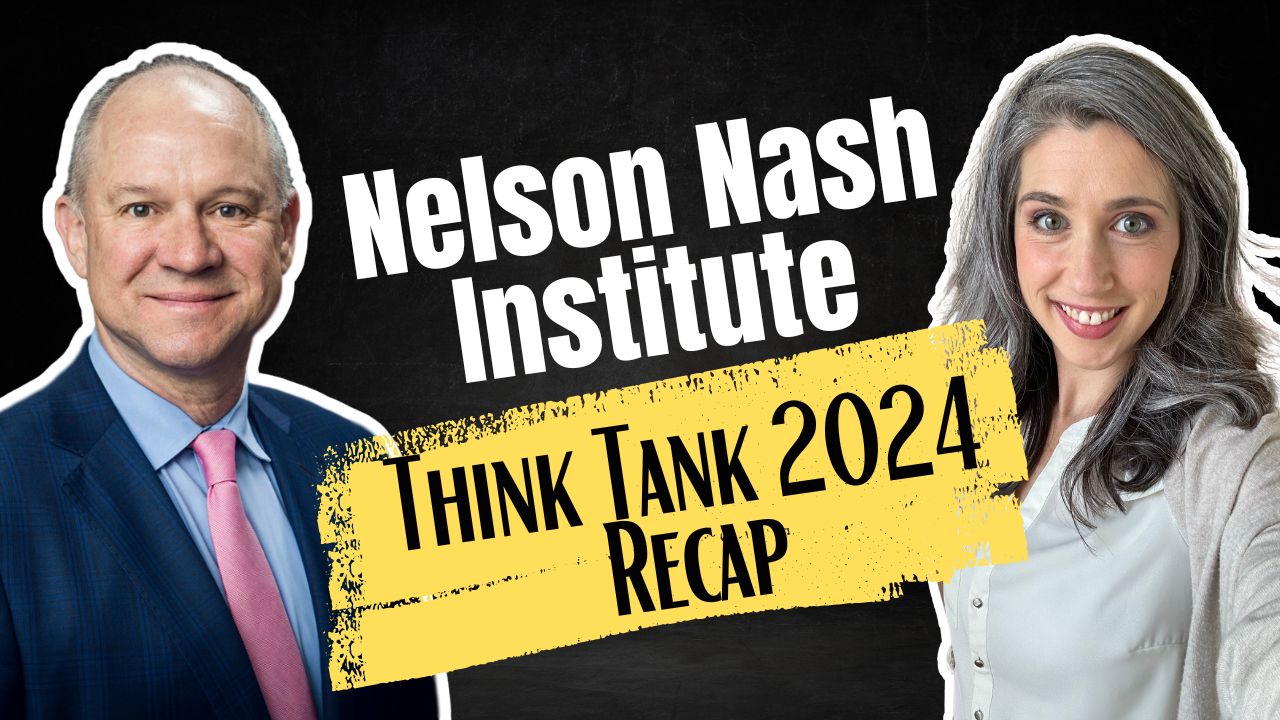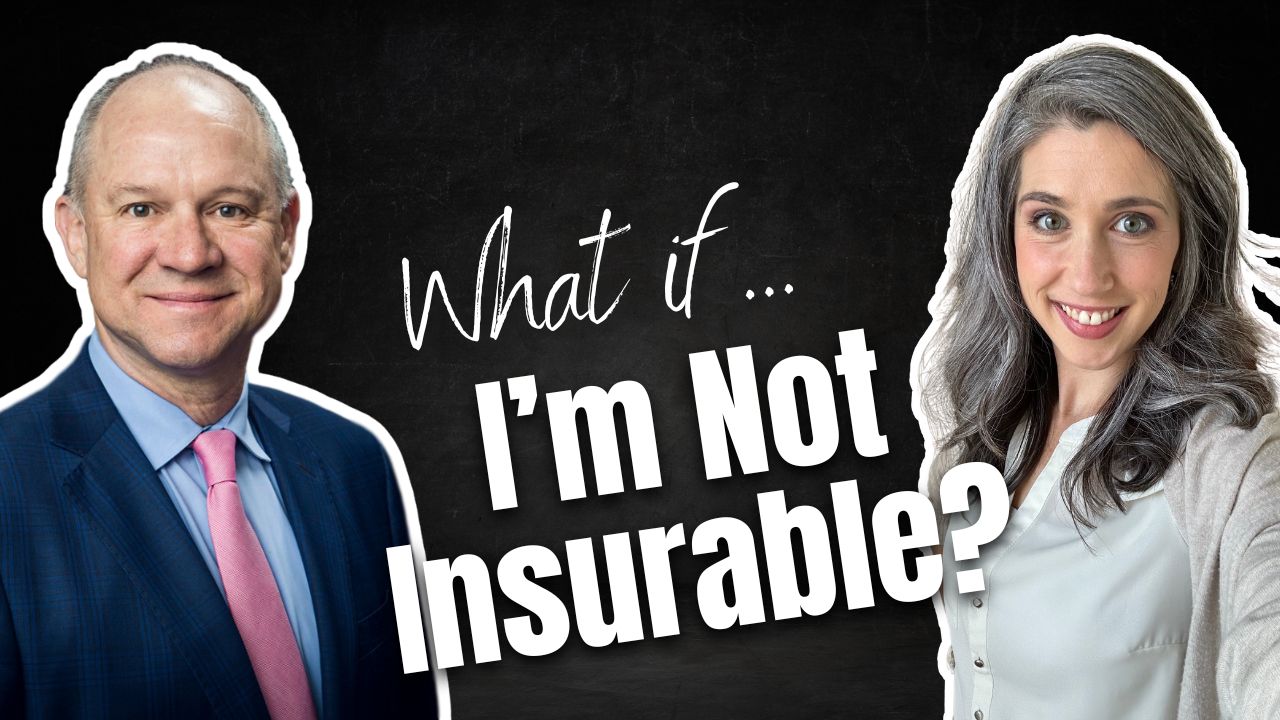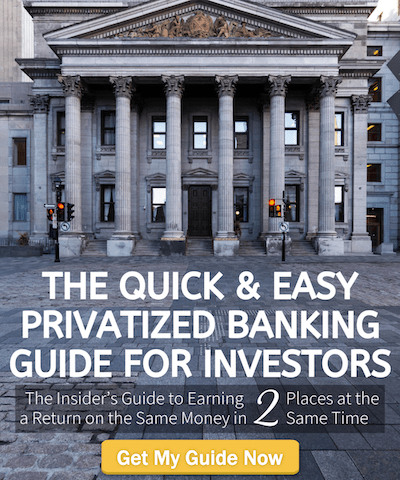
What is Infinite Banking? Part 5: What is the Dividend?
Have you heard about the Infinite Banking Concept and want to learn more? Or maybe you’re already using Infinite Banking but would like to be able to explain it better. Today we’re unpacking the question: What is the dividend?
If you’ve ever wondered how the cash value grows through dividends and how life insurance dividends differ from other types of dividends… tune in now!
Podcast: Play in new window | Download (Duration: 35:45 — 40.9MB)
Subscribe: Apple Podcasts | Spotify | Android | Pandora | RSS | More
Table of contents
What is the dividend?
Dividends are the distribution of a mutual life insurance company’s profits to its whole life insurance policyholders. Mutual companies declare their dividend rates annually.
What is the Dividend?
Dividends are the distribution of a mutual life insurance company’s profits to its whole life insurance policyholders. Mutual companies declare dividends annually.
The IRS defines it as a “return of premium.” This, however, is how the IRS can classify why dividends distribute tax-free.
Why Do I Need a Mutual Company for Infinite Banking?
When you’re with a mutual company, you’re participating in the company’s profitability via dividends. When the company profits, it’s going to benefit you because you’re a policy owner. This means you want the company to be as profitable as possible.
To recap an earlier episode of our infinite banking series, policyholders are partial owners of mutual companies. Stock companies, on the other hand, are owned by stockholders. In the latter scenario, companies will act in the best interest of the stockholders, even if it’s not in the interest of policyholders. Choose a mutual company to get dividends and work with a company that acts in your interests.
How Does the Dividend Grow My Policy?
Dividends are one of the major drivers of growth in a policy. The cash value increases in three ways: natural equity by paying premiums, the guaranteed interest portion, and dividends. While the latter is not guaranteed, they are highly anticipated.
How Does the Dividend Relate to the Guaranteed and Non-Guaranteed Policy Cash Value?
On a life insurance illustration, there are columns representing your guaranteed interest growth and the non-guaranteed growth they project you will receive. So while the former is what you can expect no matter what (since it’s guaranteed), the latter is the growth you can anticipate.
Additionally, the non-guaranteed column on an illustration will not show any dividends applied at all. Therefore, it’s a highly inaccurate way of looking at a policy illustration. Most mutual companies have paid dividends every year for the last 100 years or more. Another benefit is that once companies pay it out, it becomes guaranteed. In other words, once the floor of your policy increases, it cannot decrease.
What this means is that life insurance illustrations become inaccurate every year. Since both the guaranteed and non-guaranteed columns adjust to represent what actually occurs, and the declared dividend changes each year, the projections inevitably shift. Yet they never decrease from the “floor” of your policy.
What Income and Expenses at the Life Insurance Company Determine the Dividend Rate?
Dividends are profits paid to policyholders. However, they are declared and applied after other income and costs are accounted for.
So, for example, a life insurance company has to account for payroll expenses, agent commissions, and mortality costs (how many people died). However, the company is also earning and investing money through premiums. Companies hold most premiums in bonds, but also invest in real estate and a minuscule portfolio of equities. Companies also earn a profit from policy loans.
The balance of profits and costs is used to declare dividend rates for the following year.
Why Shouldn’t I Compare Companies?
Every life insurance company has its own proprietary way of running the company. So while the big picture operations may be similar, the exact formulas they use to apply dividends and calculate policy growth may differ. Similarly, each company has its own way of investing. While mutual companies tend to make very conservative investments, their exact profits and expenses could differ between companies. This may result in different dividend rates and applications.
How is the Dividend Applied to My Policy?
Many people get caught up in the “rate” of the dividend, but how the company applies it to your policy is more important. Much of the dividend application is proprietary. However, it’s possible to come out with a better result from a company that has a lower rate. For example, companies may apply dividends differently to newer policies or policies with many loans. It’s better to get started with a policy somewhere than to get so caught up in the line-by-line dissection of illustrations.
Can Dividends Change in the Future?
Once a company declares a rate for the year, it cannot change. However, dividends do change from year to year. This means that life insurance illustrations become outdated after a company declares a new dividend. They also lock in once you receive them, and companies cannot remove them from your account.
When Do I Receive Dividends?
Dividends are declared annually and applied annually. The declaration of dividends generally occurs at the end of the calendar year. The life insurance companies apply them to your account on your policy anniversary. So if your anniversary is May 1st, you will receive dividends every May 1st.
Why Are Dividends Applied Differently Amongst Policyholders?
Not every policyholder gets the same dividend, which can be confusing. Determining your policy growth is not as simple as adding an even percentage of your cash value.
The exact calculations are proprietary. However, you can expect that the dividend is applied differently to the cash value accumulated via base premium vs. cash value accumulated via PUAs. You can also expect them to be applied differently to a child’s policy than an older adult’s. This is because policies are designed so that the cash value equals the death benefit at age 121. If, theoretically, a child received the same application of the dividend, their cash value could grow exponentially beyond what is possible for the company to guarantee. So they apply it in a way that makes room for realistic compounding.
What is the Best Option for Infinite Banking?
You can choose to receive the dividend in a variety of ways. However, for infinite banking, we recommend setting up your policy so that you can use it to purchase additional paid-up additions (PUAs).
Paid-Up Additions are smaller, “paid-up” amounts of death benefit that you can add to your policy. This directly translates to a higher cash value and a higher death benefit. So as your cash value increases and compounds, you’re actually increasing your future death benefit over time, too.
Book A Strategy Call
Do you want to coordinate your finances so that everything works together to improve your life today, accelerate time and money freedom, and leave the greatest legacy? We can help! Book an Introductory Call with our team today at https://themoneyadvantage.com/calendar/ and find out how Privatized Banking, alternative investments, or cash flow strategies can help you accomplish your goals better and faster. That being said, if you want to find out more about how Privatized Banking gives you the most safety, liquidity, and growth… plus boosts your investment returns, and guarantees a legacy, go to https://privatizedbankingsecrets.com/freeguide to learn more.
Nelson Nash’s Legacy: Think Tank 2024 Recap
Embark on a transformative financial odyssey with us as we reflect on our profound experiences at the Nelson Nash Think Tank for 2024. Unlock the doors to personal economic empowerment with the Infinite Banking Concept (IBC), a brainchild of the late Nelson Nash that revolutionizes the use of dividend-paying whole life insurance. We shed light…
Read MoreBecoming Your Own Banker, Part 25: Uninsurability Hacks
Do you want to use Infinite Banking, but you’re uninsurable? Today we are discussing uninsurability hacks! Don’t worry, uninsurability ISN’T a game-stopper for using Infinite Banking to build your own banking system. That means you can still reap the exponential reward of dividends and interest that grow with uninterrupted compounding, store liquid cash reserves that…
Read More


